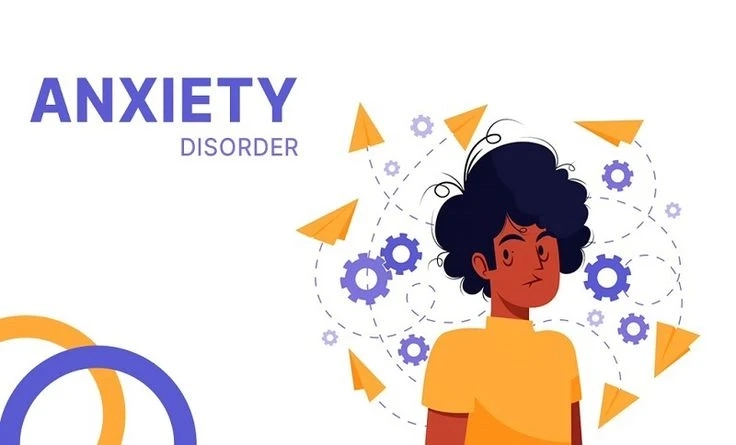In the intricate tapestry of mental health, anxiety disorder stands as a complex and pervasive thread, affecting individuals in myriad ways. This comprehensive guide aims to unravel the layers of anxiety disorder, offering insights into its various forms, causes, and symptoms, and most importantly, providing a roadmap for effective management and coping strategies.
Understanding Anxiety Disorder
Anxiety disorder is a broad term encompassing a range of conditions characterized by excessive worry, fear, and apprehension. Generalized Anxiety Disorder (GAD), Panic Disorder, Social Anxiety Disorder, and specific phobias are among the common manifestations. Understanding the nuances of each disorder is crucial in tailoring effective interventions for individuals navigating the labyrinth of anxiety.
The Neurobiology of Anxiety
Anxiety is not merely a psychological phenomenon; it has a profound impact on the brain and body. The amygdala, a key player in the brain's emotional processing, often becomes hyperactive in individuals with anxiety disorders. Additionally, neurotransmitters such as serotonin and gamma-aminobutyric acid (GABA) play a crucial role in regulating mood and anxiety levels. An in-depth exploration of the neurobiological underpinnings provides a foundation for comprehending the complexity of anxiety disorders.
Causes and Risk Factors
Anxiety disorders are multifaceted, often arising from a combination of genetic, environmental, and psychological factors. Family history, traumatic experiences, chronic stress, and certain personality traits contribute to susceptibility. Understanding the interplay of these elements sheds light on why some individuals are more prone to anxiety disorders than others.
Recognizing the Symptoms
Anxiety disorders manifest through a spectrum of symptoms that extend beyond the common perception of excessive worrying. Physical symptoms such as muscle tension, restlessness, fatigue, and sleep disturbances often accompany the emotional aspects. Cognitive symptoms, including racing thoughts and difficulty concentrating, further compound the challenges faced by individuals with anxiety disorders.
Diagnosis and Assessment
Accurate diagnosis is a pivotal step in managing anxiety disorders. Mental health professionals employ standardized assessment tools, interviews, and careful consideration of diagnostic criteria outlined in the Diagnostic and Statistical Manual of Mental Disorders (DSM-5). An individualized approach ensures that the unique aspects of each person's experience are taken into account.
Types of Anxiety Disorders
Diving deeper into the diverse landscape of anxiety disorders unveils distinct characteristics and challenges associated with each subtype. Panic disorder is marked by sudden and intense bouts of fear, while social anxiety disorder involves a profound fear of judgment in social situations. Specific phobias center around irrational fears of specific objects or situations, and obsessive-compulsive disorder (OCD) introduces intrusive thoughts and ritualistic behaviors. Each type requires tailored interventions for effective management.
Treatment Modalities
A variety of treatment modalities exists for managing anxiety disorders, emphasizing a holistic approach. Cognitive-behavioral therapy (CBT) stands out as particularly effective, helping individuals identify and modify negative thought patterns. Medications, including selective serotonin reuptake inhibitors (SSRIs) and benzodiazepines, may be prescribed in conjunction with therapy. Integrative approaches such as mindfulness-based stress reduction (MBSR) and exercise also play integral roles in comprehensive treatment plans.
Lifestyle Modifications for Anxiety Management
Beyond clinical interventions, lifestyle modifications contribute significantly to anxiety management. Regular exercise not only promotes physical health but also enhances mood and reduces anxiety. A balanced diet, sufficient sleep, and mindful practices foster overall well-being. Limiting caffeine and alcohol intake can further stabilize mood and minimize anxiety triggers.
Building Resilience and Coping Strategies
Empowering individuals to navigate anxiety involves building resilience and developing coping strategies. Mindfulness and relaxation techniques, such as deep breathing and progressive muscle relaxation, offer immediate relief during heightened moments of anxiety. Cognitive restructuring, a component of CBT, helps individuals reframe negative thought patterns, fostering a more adaptive mindset.
The Role of Social Support
Navigating anxiety is not a solitary journey. Establishing a robust support system, comprising friends, family, and mental health professionals, creates a network of understanding and encouragement. Peer support groups provide a space for individuals to share experiences, strategies, and triumphs, fostering a sense of belonging.
Prevention Strategies
Preventing the onset of anxiety disorders involves early intervention and targeted strategies. Addressing stressors, promoting mental health awareness, and fostering resilience in children and adolescents can mitigate the risk of developing anxiety disorders later in life. Creating supportive environments and reducing societal stigma around mental health play vital roles in prevention efforts.
Conclusion
"Unraveling Anxiety Disorder: A Comprehensive Guide" endeavors to illuminate the intricate landscape of anxiety disorders. By understanding the diverse forms, causes, and symptoms, individuals and communities can work together to destigmatize mental health, promote early intervention, and cultivate an environment that empowers those living with anxiety disorders to embark on a journey of healing and resilience.



